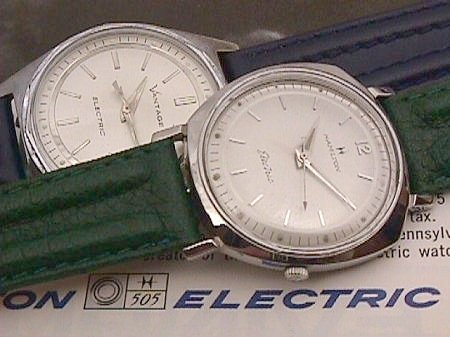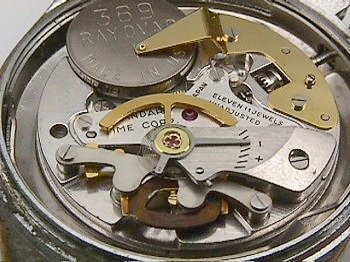


Here in Australia, it is relatively unusual to see American vintage watches come in for repair or service. Most vintage wristwatches we see here are Swiss, and pocketwatches Swiss or English.
In my 25 or so years of collecting and repairing, I have never seen a Hamilton Electric (though I'm no stranger to Accutrons), so when Paul Delury asked me to take a look at one of his Hamilton 505's (the poor deluded fool!) which wasn't running very well, I jumped at the opportunity. Armed with Rene Rondeau's book "The Watch of the Future", it didn't take very long to figure out how it worked, and the watch was serviced and now is keeping remarkably good time, within a few seconds a day.
With the benefit of 20/20 hindsight, it is hard to imagine how these watches ever got into mass production...they certainly appear to be a triumph of wishful thinking over sound engineering, or, at least, a triumph of Hamilton's Marketing Department over its Engineering Department. The Hamilton Electrics were ahead of their time, but missed the boat on taking advantage of the latest technology - the transistor. In their favor, I found the 505 movement very easy to work on, though I understand this is not the case with the earlier Model 500.
Paul has a couple of these watches, one is a Sea-Lectric II with the 505 movement manufactured by Hamilton, the other a Vantage with a movement made under licence to the Standard Time Corp (Hamilton's economy watch subsidiary) by Ricoh in Japan. Both movements have 11 jewels, and are fitted with KIF shock protection on the balance. We though it would be interesting to compare the two movements and see what changes were made when production was moved offshore.
 |
 |
|
| The Hamilton Model 505 | The Standard Time Model 505 |